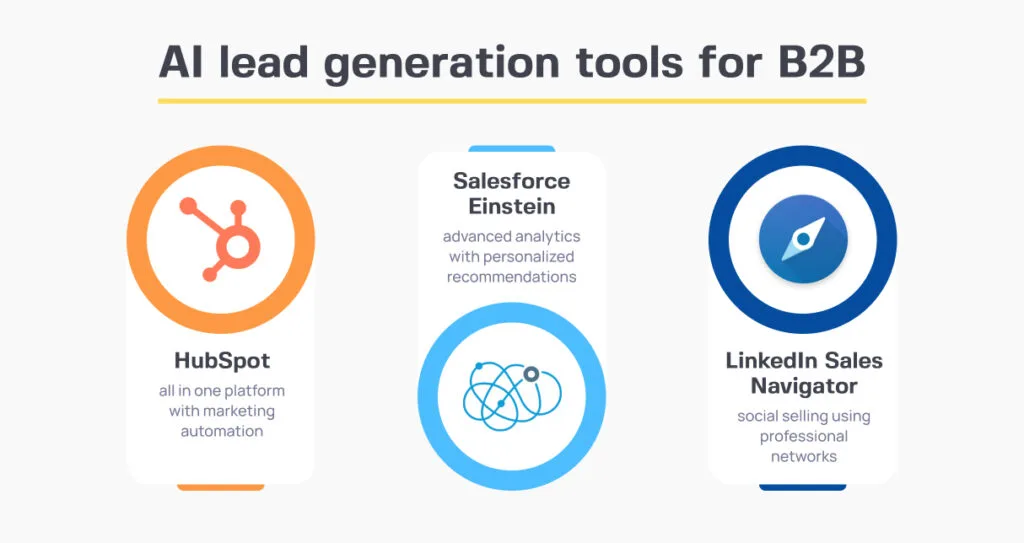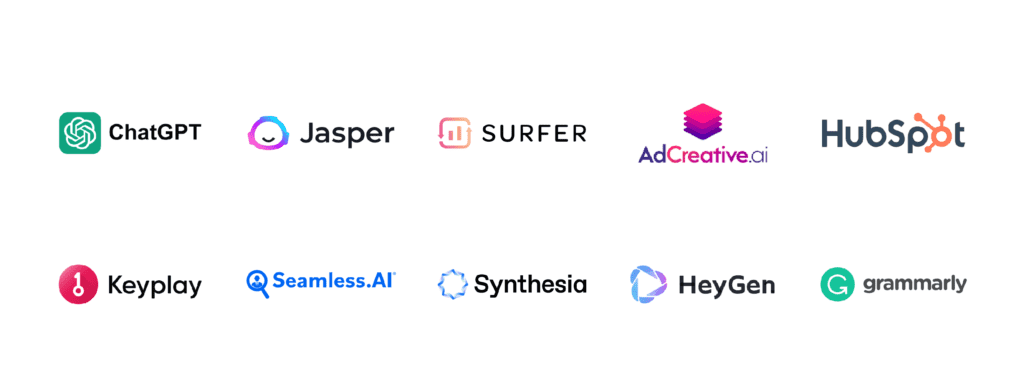AI Automation for B2B: Techniques to Enhance Your Business Efficiency
AI automation in the B2B market presents a critical opportunity for companies to boost their performance. By simplifying processes and improving decision-making, organizations can attain substantial performances. Nevertheless, the successful integration of AI requires cautious factor to consider of various factors. Recognizing which locations to automate and picking appropriate devices are just the start. The potential for transformation raises important questions concerning application and ongoing assessment. What techniques will ensure long lasting success in this evolving landscape?
Recognizing AI Automation in B2B Context
As organizations progressively look for performance and technology, understanding AI automation in the B2B context ends up being important. AI automation leverages sophisticated innovations to streamline processes, improve decision-making, and enhance total productivity. By incorporating AI tools, companies can enhance operations such as supply chain administration, consumer relationship administration, and data evaluation. These innovations can examine substantial amounts of information quickly, offering workable understandings that drive calculated initiatives. In addition, AI-driven automation minimizes human mistake and maximizes staff members to focus on even more complex jobs. By promoting partnership in between human knowledge and maker capabilities, services can achieve an affordable side. Inevitably, recognizing AI automation is important for B2B organizations aiming to thrive in a progressively electronic market.
Identifying Locations for Automation
In the mission for reliable AI automation in B2B, it is important to recognize details areas where automation can generate considerable advantages. This includes assessing job repetitiveness, discovering possibilities for information handling, and determining workflow traffic jams. By concentrating on these aspects, organizations can enhance operations and enhance efficiency.
Job Repetitiveness Assessment
Job repetitiveness analysis plays a crucial duty in determining locations ripe for automation within B2B operations. Business Process Automation. This procedure includes examining daily jobs to figure out which are recurring and taxing, consequently impeding performance (Growth Systems For B2B). By looking at process, services can pinpoint details features that require excessive hand-operated input, such as information entrance, billing processing, or customer follow-ups. Acknowledging these repeated jobs enables organizations to allot resources a lot more effectively, enhancing general performance. In addition, automation can reduce human error, enhance operations, and liberate employees to concentrate on higher-value activities. Carrying out a thorough task repetitiveness evaluation encourages B2B organizations to adopt targeted automation techniques, eventually driving improved efficiency and affordable benefit in the marketplace
Data Handling Opportunities

Process Bottleneck Identification
Identifying operations traffic jams is a critical action in understanding the complete benefits of automation within B2B organizations. These traffic jams frequently show up as hold-ups, source restrictions, or inefficient processes that impede efficiency. To properly pinpoint these areas, businesses can perform extensive analyses of their workflows, utilizing metrics such as cycle time and throughput. Involving employees in conversations about discomfort factors can additionally provide useful insights. Organizations can prioritize them based on effect and feasibility for automation once traffic jams are recognized. By tactically resolving these inadequacies, B2B business can improve operations, improve partnership, and eventually boost general performance. This aggressive technique to operations evaluation prepares for effective automation initiatives that drive organization growth.
Choosing the Right AI Equipment and Technologies
As services progressively turn to AI to improve their operations, choosing the right devices and technologies comes to be crucial for attaining wanted end results. Organizations has to assess their certain requirements and purposes, thinking about variables such as user-friendliness, compatibility, and scalability. A comprehensive market analysis can help recognize leading AI remedies tailored for their industry. Additionally, services must examine the technical facilities required to sustain these devices, making sure seamless integration with existing systems. Data safety and compliance with policies are additionally crucial considerations that influence tool option. By concentrating on these standards, business can make informed decisions that drive efficiency and performance, ultimately bring about improved organization efficiency. The best AI tools encourage companies to innovate and maintain a competitive side out there.
Creating a Calculated Execution Strategy
A successful strategic application strategy for AI automation in B2B needs plainly specified essential goals. Additionally, companies have to analyze their existing capacities to identify spaces and chances for enhancement. Constant surveillance and adjustment of the method will certainly guarantee alignment with progressing service demands and modern technology innovations.
Define Secret Objectives
To ensure effective AI automation in B2B settings, specifying vital purposes is crucial for developing a strategic application strategy. Organizations must identify specific, quantifiable objectives that align with their total organization method. This quality gives a roadmap for the automation process, ensuring that efforts are concentrated on locations that will certainly yield the greatest effect. Trick purposes may consist of enhancing operational performance, improving consumer contentment, or raising earnings. Establishing these goals enables teams to prioritize sources successfully and track development over time. Additionally, clear purposes assist in much better communication among stakeholders, fostering collaboration and placement throughout Website the company. Inevitably, well-defined objectives function as the foundation for a robust AI automation technique that drives service efficiency.
Examine Present Abilities
Prior to applying AI automation, companies need to completely evaluate their current capabilities to determine toughness and weak points. This assessment involves taking a look at existing modern technologies, labor force skills, and operational processes. By conducting an in-depth audit, companies can determine areas that require renovation or investment. Organizations ought to additionally consider their data management methods, as the top quality and ease of access of data are essential for effective AI combination. Understanding the existing technical landscape allows firms to align their sources and capabilities with their calculated purposes. Furthermore, it is necessary to review business society and preparedness for modification, as these variables substantially affect the adoption of AI options. This assessment works as the structure for establishing a calculated implementation strategy that maximizes the capacity of AI automation.
Monitor and Adjust
Implementing AI automation calls for a dynamic strategy that highlights constant tracking and change. Businesses should develop a tactical implementation strategy that integrates normal examinations of AI efficiency against predefined metrics. This includes monitoring essential efficiency indicators (KPIs) to examine the efficiency of automation remedies. By evaluating information, organizations can recognize locations for enhancement and tweak their AI systems accordingly. Engaging with stakeholders throughout the process assures that the automation aligns with organization goals and customer requirements. In addition, fostering a society of versatility permits business to respond quickly to changing market conditions and technical advancements. AI Automation For B2B. Inevitably, recurring surveillance and change not just improve functional effectiveness however also drive continual business efficiency in the affordable B2B landscape
Ensuring Data Top Quality and Combination
As organizations increasingly rely upon AI automation in B2B processes, making certain data top quality and assimilation comes to be important for success. High-quality data is vital for accurate analytics, informed decision-making, and effective consumer interaction. Information have to be cleansed, standardized, and confirmed to remove mistakes and inconsistencies that could cause misdirected understandings. Additionally, smooth combination across various platforms and systems is necessary; diverse information silos prevent automation initiatives and lower functional efficiency. Organizations ought to adopt robust data governance structures and make use of innovative tools to help with data assimilation while maintaining top quality standards. By prioritizing these components, companies can enhance their AI automation initiatives, inevitably bring about boosted performance and a competitive advantage in the B2B landscape.
Determining Success and ROI of AI Initiatives
Exactly how can organizations properly determine the success and return on investment (ROI) of their AI initiatives? To determine efficiency, organizations ought to develop clear, measurable objectives straightened with critical purposes. Secret efficiency indications (KPIs) such as expense savings, earnings growth, and performance renovations can supply beneficial insights. Organizations often carry out baseline analyses prior to applying AI, enabling them to contrast pre- and post-implementation metrics. In addition, assessing consumer fulfillment and involvement can disclose the effect of AI on user experience. Consistently examining these metrics assists in refining AI strategies and making certain placement with business objectives. By utilizing an organized technique to measurement and analysis, organizations can accurately analyze the efficiency of their AI campaigns and make notified choices about future financial investments.
Conquering Challenges in AI Adoption
Although lots of companies acknowledge the capacity of AI to change their procedures, they usually experience significant difficulties during fostering. Key obstacles consist of an absence of knowledgeable employees, which hinders the reliable execution and management of AI innovations. Organizations also encounter combination concerns, as existing systems may not be suitable with new AI services. In addition, concerns concerning information personal privacy and protection can bring about resistance in fully welcoming AI capacities. Resistance to change from workers can better complicate the shift, demanding comprehensive training and interaction techniques. To get rid of these obstacles, organizations should purchase skill advancement, warranty durable data governance, and cultivate a culture that embraces innovation, ultimately leading the way for successful AI combination and improved service performance
Frequently Asked Inquiries
Just How Can AI Automation Improve Customer Partnership Administration in B2B?
AI automation can improve consumer relationship management in B2B by simplifying communication, offering tailored communications, examining customer data for understandings, automating follow-ups, and boosting reaction times, inevitably promoting more powerful connections and driving sales development.
What Industries Advantage Most From AI Automation in B2B?
Production, finance, healthcare, and logistics industries benefit most from AI automation in B2B. These fields take advantage of automation to streamline processes, improve data evaluation, boost customer interactions, and ultimately boost functional effectiveness and productivity.
How Does AI Automation Impact Staff Member Roles in B2B Firms?
AI automation transforms worker functions in B2B business by simplifying tasks, decreasing recurring work, and enabling team to concentrate on tactical initiatives. This change enhances efficiency and fosters a society of development and flexibility.
What Are the Expenses Related To Applying AI Automation?
The prices related to implementing AI automation include preliminary software program procurement, facilities upgrades, training costs, continuous upkeep, and possible assimilation challenges. Minarik AI. Companies need to likewise take into consideration long-term functional shifts and employee adjustment expenditures in their financial planning
Just How Can Businesses Make Sure Honest AI Use in Their Procedures?
Companies can assure moral AI use by establishing clear standards, promoting openness, carrying out routine audits, including diverse stakeholders, and prioritizing data personal privacy. Constant training and recognition programs even more improve understanding and adherence to honest techniques.
